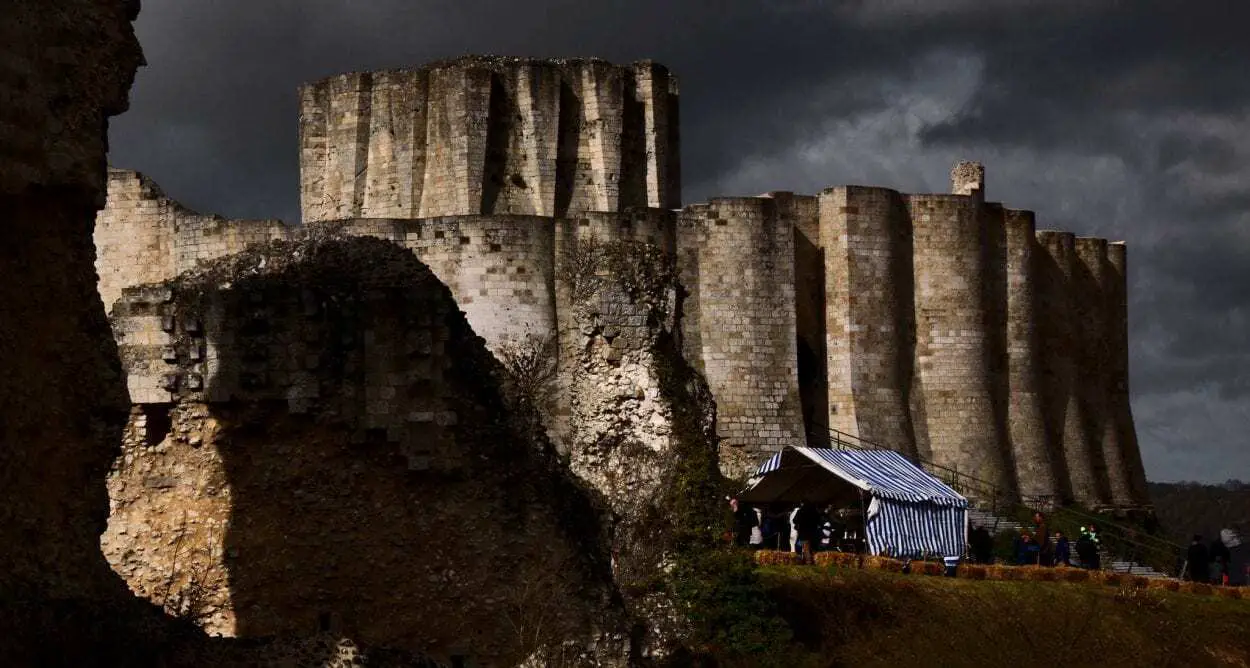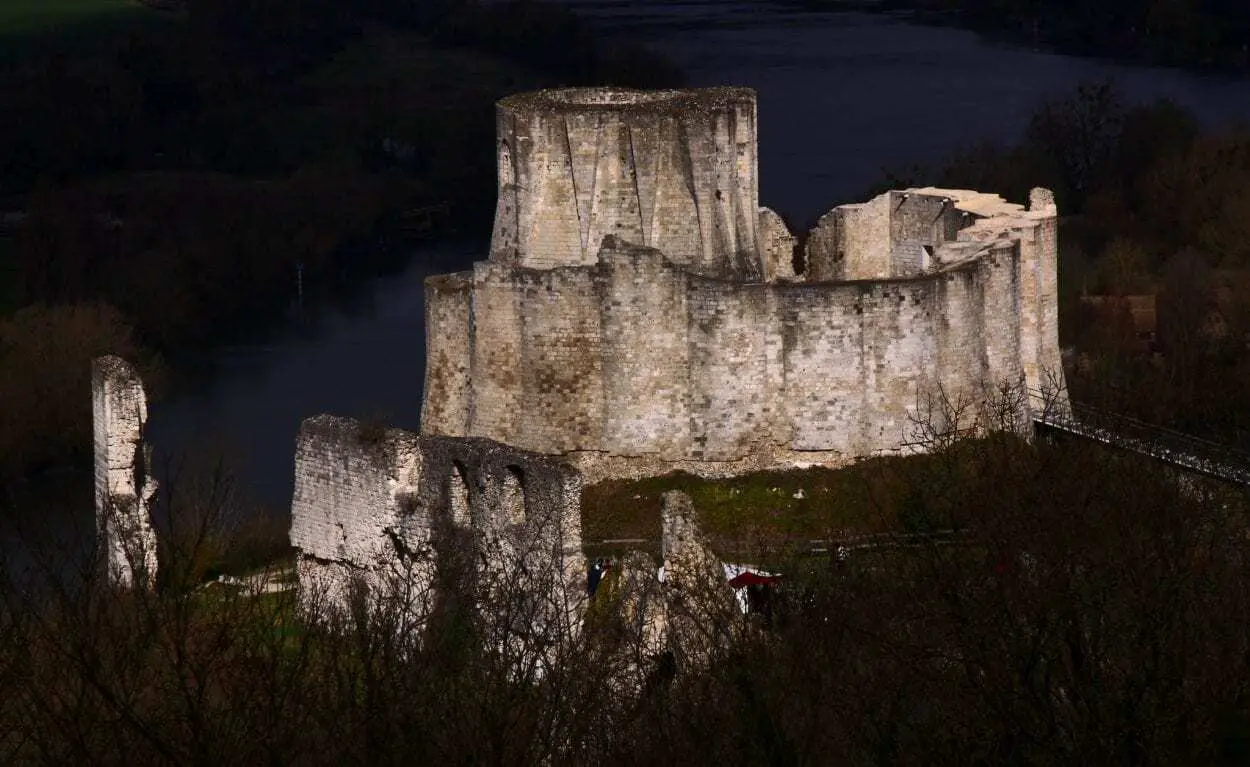Château Gaillard is a ruined medieval castle, located in the commune of Les Andelys in Normandy France.
Construction of the castle began in 1196 by King Richard I, also known as Richard the Lionheart – who ruled as King of England and held the Dukedom of Normandy, as well as several other territories.
After his succession to England’s throne, Richard spent most of his life crusading or defending his lands in France. History chronicles Richard as a pious hero, but in reality, he was an absentee ruler who used England’s treasury and taxes as a source of revenue to fund his armies and military exploits overseas.
In January 1196, Richard signed a peace treaty called the Treaty of Louviers with King Philip II of France, an agreement to settle the claims of the Angevin Kings of England pertaining to the Manors of Andeli and Louviers in Normandy.

Under the terms of the treaty, the manor of Andeli in Normandy was to remain unfortified, but Richard chose to ignore the treaty and build Château Gaillard on the Rock of Andeli in response to Philip building castles at Vernon and Gaillon, which Richard argued had violated the treaty.
Richard chose the site for the strategic position the castle would take in filling a gap in the Norman defences left by the fall of Château de Gisors to Phillip in 1193 whilst Richard was imprisoned in Germany, in addition, to act as a frontier base for Richard to launch campaigns in the Norman Vexin (a contested border between the Angevin and French Capetian lands).
Château Gaillard incorporated the latest technological advances in castle warfare, consisting of three enclosures using concentric fortifications and machicolations (a floor opening in the battlements for dropping materials, oil, or boiling water on attackers), separated by dry moats, with an inner keep.

The total cost of construction has been estimated at around £12,000 (£25,000,000 in today’s monetary value), a considerable expense when you consider that Richard only spent £7,000 on castles across England during his reign as King.
In Richard’s final years before his death (caused by an infected arrow wound to his shoulder whilst besieging Châlus), Château Gaillard served as Richard’s preferred residence where the final writs and charters of his kingship were written.
After Richard’s death, his brother King John of England failed to defend the Duchy of Normandy and territories in France against Philip, resulting in the collapse of the Angevin Empire.

Philip placed Château Gaillard under siege from 1203 to 1204, but John made no attempt to relieve the castle garrison forcing the defenders to capitulate, allowing the French to enter the Seine valley and take Normandy.
During the Hundred Years’ War (a series of conflicts over the right to rule France between the House of Plantagenet and its cadet House of Lancaster, and the House of Valois from 1337 to 1453), possession of Château Gaillard switched several times, with the castle being taken by the French for the last time in 1449.
Header Image Credit : Roman Geber – CC BY-SA 4.0





